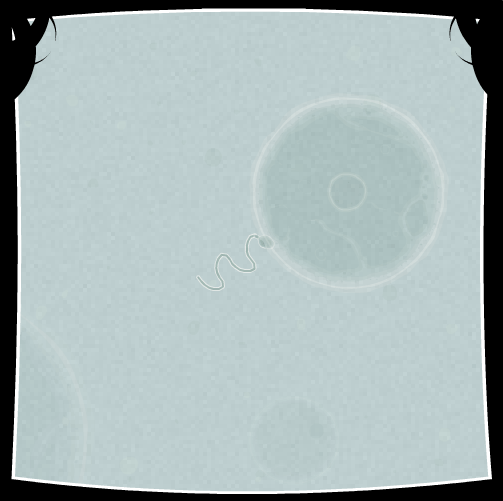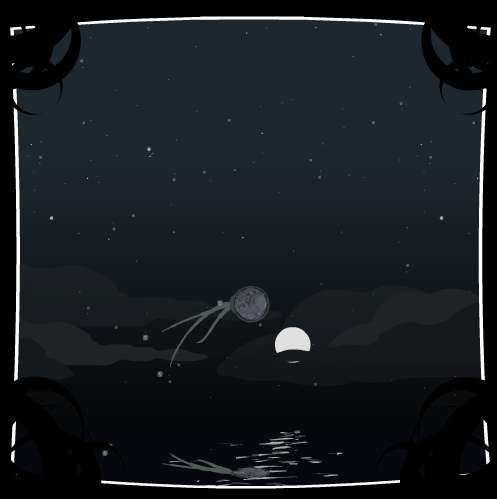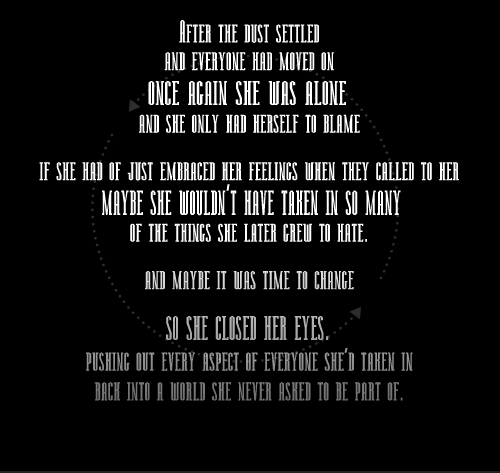IndieZero: Coil

[HI! IndieZero is back. Although we tried to pretend it never really left, but whatever. It’s a thing where we talk about indie games we like. Enjoy.]
Back in 2005, Rod Humble came out with The Marriage, which has since become the card up the sleeve of everyone in the Are Games Art? debate as an out and out art game. He did the blog circuit and wrote something or other on The Escapist about it. The draw was the use of formal game rules as a tool of representation, which he detailed over here, making it one of the weightiest examples of conceptual art in video games.
That was a few years ago and whether games can be art or not is old news. Of course they can be; you’d be hard-pressed finding anyone in the industry saying otherwise these days. Art Games, News Games, Serious Games. The independent game industry is swimming in genres and games that are trying to legitimise the medium, and it’s fraught with the potential to make valuable artistic statements in strikingly new and engaging ways.
But there is a dark cloud, a shadowy gorilla that we’ve refused to acknowledge: A lot of art games suck. For every talented game auteur of our generation there are the leagues of screaming idiots waving their Computer Science degrees around, continuously spamming Gambit’s mail pool with that bit of concept art they once drew where they replaced Chun-Li’s face with Ayn Rand; A lifetime’s collection of weird brother-in-laws rattling on about how the world needs a game about the plight of Esperanto speakers, or something just as nebulously poignant. Art games often get slack for ideas that don’t seem as well-rounded as they probably should be. Braid’s bizarre atom bomb/broken romance idea that Blow refuses to explain, most of Tale of Tales’ work. The modern art game feels like the products of a flawed critical standard in an industry that laud ideas, any ideas, more than well-developed artistic talent. An industry that perpetuates the philosophy that on a long enough bell curve even unintelligible ideas look impressive when you’re comparing them to WET.
And with that in mind, here’s Coil.

Coil is an example of a game that is quite interesting for as many legitimate reasons as it is for just being almost pointlessly incomprehensible.
This is the 2009 IGF nominee for Innovation by designer Edmund McMillen, the guy that did Super Meat Boy. It’s a short Flash game made up of six mini-games that are all held together by an ongoing prose story which carries on between every segment, and it looks like this:

It’s fitted in a kind of slow and sombre style, full of dark organic artwork and a kind of broken music box soundtrack.
The gameplay is filled with a number of interesting bits. There are no actual instructions given at any point in the game, so discovering what exactly you’re meant to be doing each level, let alone what controls you’re meant to use, is part of the appeal. You’re essentially dealing with a set of traditional minigames throughout, from shooters to basic puzzle games. However without instructions the aim of discovery in the game becomes the primary aspect of gameplay and that really helps invigorate the fairly bog-standard minigame tropes you’re working under. In fact for many of the levels it took me a good five or ten minutes per level before I recognised what sort of game I was even playing. Beyond that the resonating aspect of the game is the atmosphere throughout, which feels incredibly foreboding as if you’re committing some kind of terrible act when you successfully make it through each level.
It also has this thing in it:

WTF ARE YOU
This is McMillen’s self-described experimental, autobiographical art game. More than the gameplay itself, the focus turns to the symbolism and plot that’s been integrated into the game. The storyline, from what I can tell, is a metaphor for rape when it’s not about a sperm that turns into some sort of flying alien squid. At least I think that’s what’s happening. Where the prose seems to suggest a woman hitting the bottom, the visuals invoke the story of sperm that shoot each other in the face with weird sperm arrows.

Pew Pew Combat
The interpretive difficulty of the game is no fault of the prosey story woven throughout. In fact, that’s only reason I have any clue of what’s happening at all; the language in the game is the best figurative tool McMillen has to work with. Unfortunately for him I’m not sure that’s something you’d want in an interactive, visual game when the visual cues the game gives you feel impossible to even begin to interpret.

Walk it off, Princess
Without the short story tacked on throughout, the actual premise of the game is so impenetrable it feels like McMillen is guarding it like a fucking Templar secret. I noticed that particularly once I hit level four and the aim appeared to be to manoeuvre a giant sperm thing by repeatedly clicking on a picture of a spleen.

There’s a thin line in the world of art between quite interesting and deceptively rubbish and Coil sits somewhere between the two. The consensus has been that the genre is just too affected – hell, even Anthony Burch thought The Path should tone it down a notch. But I don’t think pretension is really an adequate critique in this situation. Pretension is the kind of thing that needs to be reserved only for Vice parties or guys who brew their own hemp lager, not the sort of people who can script in Python. What makes a bad art game isn’t necessarily the designer with delusions of grandeur; it’s that art games become exempt from criticism on the basis that the baffling and indecipherable might just be art.